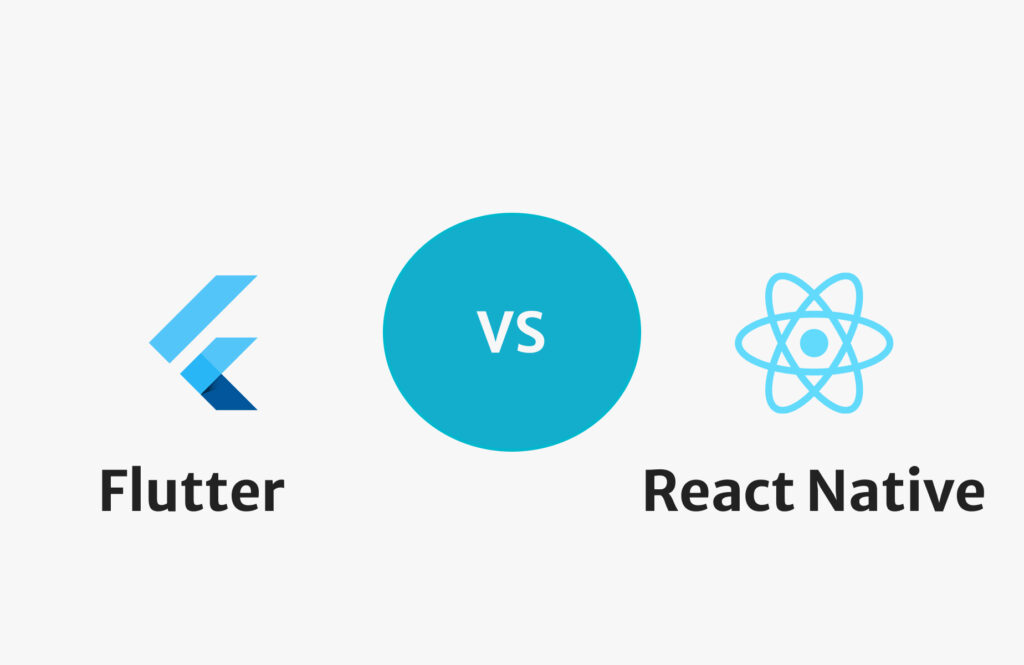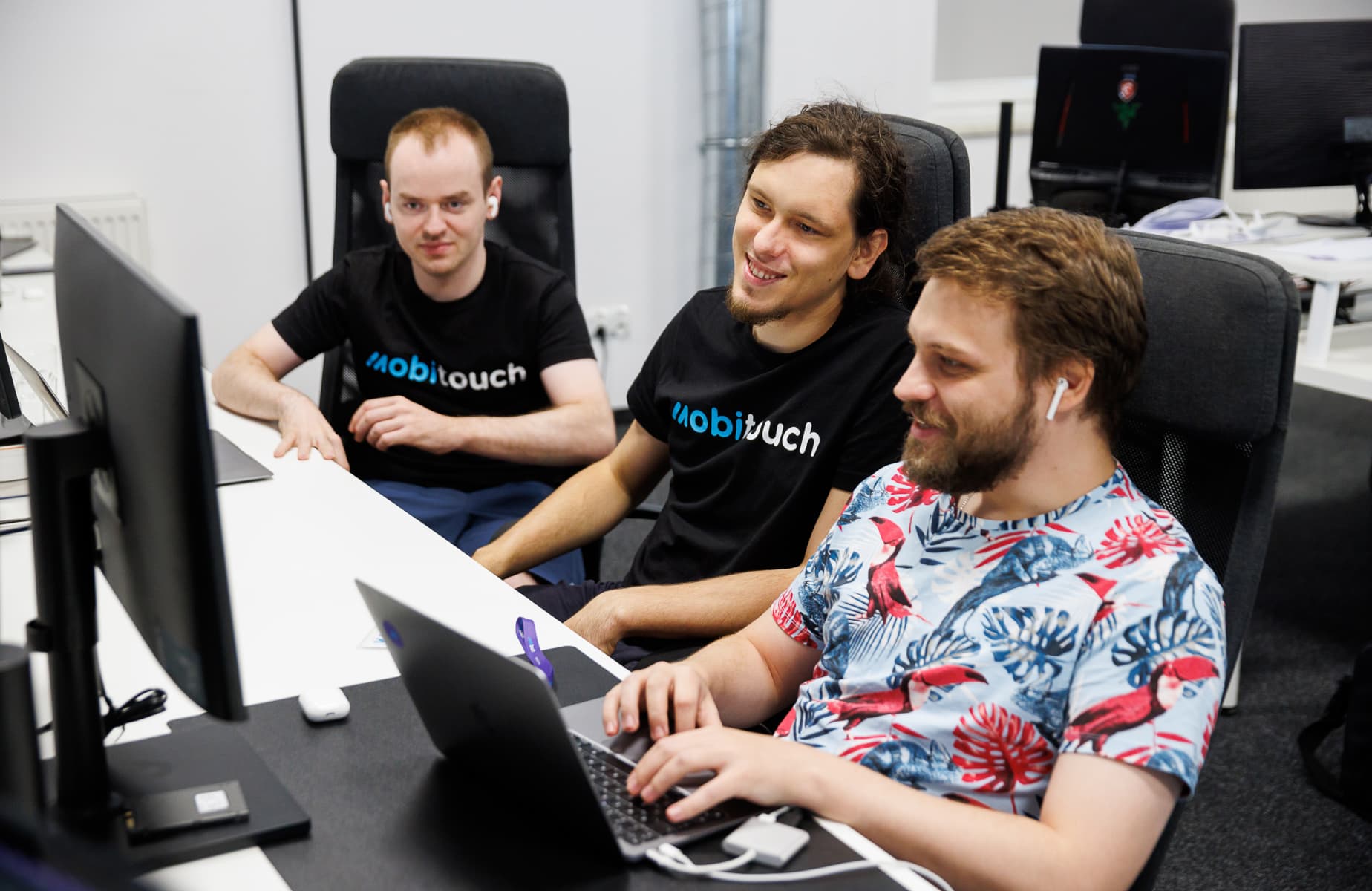When choosing a cross-platform technology for a new mobile app, the most common dilemma is whether it should be Flutter or React Native. Both technologies are open-source, developed by two tech giants, have large developer communities, and offer the same solution: creating code that works simultaneously on Android and iOS devices, eliminating the need to write it separately for each platform. If you’re reading this article, you’re probably asking yourself the following questions about choosing between Flutter and React Native:
- Will the app work on both platforms (iOS, Android)?
- Will the app work smoothly?
- Will the app be sustainable in the long run without exposing me to unnecessary future costs?
- Which technology allows for faster app development?
- If any issues arise, will I quickly find developers who can help me?
In this article, we’ll look at the differences between Flutter and React Native, trying to answer the above questions.
A brief introduction to Flutter and React Native
Currently, both technologies are considered equivalent, and in most cases, both Flutter and React Native can be recommended. However, as always, the devil is in the details, so let’s take a closer look to make a more informed choice.
React Native is a framework created and developed by Facebook. It officially appeared in 2015. It’s written in JavaScript and is based on React.js. It has been one of the more important mobile technologies for years.
Flutter, slightly younger, made its official debut in 2017. Created by Google, it has been actively developed from the start, quickly catching up to the two-year lead of React Native. According to statista.com, Flutter surpassed React Native in terms of popularity as early as 2021. It is written in the Dart language.
At pressent, Flutter is the most common choice among developers across all mobile technologies.

The main differences between Flutter and React Native
If we were to point out differences in both technologies, we could use the following simplification:
Flutter is a set of well-matched, excellently documented tools for creating applications with immense capabilities. It’s written in Dart and compiles directly into native code for iOS and Android systems. It creates the user interface simultaneously for both platforms. The basic building blocks for applications in Flutter are widgets (“window gadget”). It’s worth mentioning that these are entirely created by the Flutter engine.
React Native is a sort of patchwork of solutions and libraries that are not imposed from the top down. In this case, the developer has more decision-making possibilities, and they can approach programming solutions very flexibly. Front-end developers who are well-acquainted with the React.js ecosystem will have no problem finding the right library. React Native is written in the popular JavaScript language and connects with native languages for iOS and Android through the js-bridge, and then creates the user interface.
Not sure which technology to choose for creating your mobile app? Talk to our experts.
Book a free consultation1. Will the app work on both platforms (iOS, Android)?
Every mobile technology has its limitations, but if we know that a given functionality works on iOS and Android, we can with high probability assume that Flutter and React Native developers will also manage to implement it. Both cross-platform platforms sometimes use different solutions, so the implementation of some functions significantly differs.
In Flutter’s case, there are much greater possibilities for creating a custom look for the interface or animations. Meanwhile, in React Native, which relies on native elements, creating a complicated interface or animations will require a greater effort from the developer.
Sometimes the developer must code a given functionality on the native side (use solutions separate for iOS or Android, instead of writing code in Dart or JavaScript) or find an appropriate library that will enable it. Additionally, native code can be included in the code written in Flutter or React Native at any time, and then return to the code written in the cross-platform technologies.
2. Will the app operate smoothly?
Both React Native and Flutter offer very good performance, almost equal to native solutions. However, React Native may be slightly less efficient due to the aforementioned js-bridge, which slows down the application’s performance. Flutter does not use native components but creates its own, which allows it to operate faster than React Native.
The app size will also be relatively larger in React Native than in Flutter. If you plan to create a mobile app with extensive functionalities, Flutter might be a better option in terms of performance. An example of a high-traffic Flutter app is the Radio Nowy Świat app we developed.
3. Will the app be sustainable in the long run without exposing me to unnecessary future costs?
Since both technologies are relatively young, we shouldn’t worry that they will stop being supported in the near future, forcing a complete rewrite of the code. Flutter and React Native aren’t likely to disappear from the scene anytime soon. New features are introduced to both frameworks every year. Choosing either, you can rest assured. However, remember that regardless of the chosen technology, the app will require regular maintenance to update packages.
4. Which technology allows for faster app development?
Let’s be honest – opinions here are strongly divided because everything depends on how complex the app is supposed to be, what functionalities it should offer, and what challenges you may encounter during the development process. React Native has much more modest documentation compared to Flutter, so when a developer encounters an unusual problem, they often have to spend more time finding a solution.
If there’s a need to create not only a mobile app but also a web version, a big advantage of Flutter is that it can create an app for iOS and Android as well as for the web platform from a single codebase (3 in 1). In the case of React Native, written in JavaScript, part of the code responsible for the app’s logic can be shared for both the web and mobile platforms. However, this is not the entirety of the code. Here, Flutter has the edge.
5. In case of problems, will I quickly find developers who can help me?
Flutter and React Native are not niche technologies, so if there’s a need to engage more developers in the work, you will surely find them relatively quickly.
React Native is a framework based on JavaScript, which automatically means that front-end developers have the possibility to learn the cross-platform version of this language very quickly. It would seem that there should be more React Native developers than Flutter ones, but this is not necessarily the case. Learning React Native is easier for programmers who have already mastered JavaScript, but for those who are just starting, Flutter may turn out to be a more accessible option. Perhaps this is why the once rarely used Dart language has gained such a huge number of followers at a rapid pace.
Summary
Flutter and React Native are currently the main cross-platform solutions, and despite their differences, both are commendable. Flutter will be a better solution if performance is crucial in the app, as well as smooth animations and scrolling. Additionally, it offers the possibility to create web applications. React Native, on the other hand, has a very large community of developers, and front-end developers can relatively quickly master this framework.
It’s therefore worth keeping an eye on the trends in the development of both technologies. Knowing the characteristics of the app, its functionalities, and the expected direction of further development, your technology partner will be able to advise the best technological solution for your project.
Concepts You Need to Know
Native technology – technology that uses the same language as the software of the device, i.e., devices with the Android operating system use technologies written in Kotlin, and devices with the iOS system (Apple devices) use technologies written in Swift.
Cross-platform technology – technology that operates simultaneously on devices with different operating systems, e.g., Android and iOS, usually by compiling into the languages of those systems.
Framework – a set of tools, code libraries, APIs, and other resources that developers can use to build applications. Frameworks provide structure, support, and guidance to help programmers create robust, easy-to-maintain applications. Popular frameworks include Flutter, React.js, .NET.
Documentation – a description of possible applications and existing libraries of a given framework. It usually contains tutorials, tips, code examples, and detailed descriptions of the platform components and how they work together.
Library – a collection of pre-written code that can be used to add functionalities to applications. Libraries can be easily shared and reused.
Dart – the language used by the cross-platform technology Flutter.
React.js – a framework based on javascript. It is the basis for the cross-platform technology React Native.
Native functions – functions that are provided in the software environment of a given device and dedicated to it, e.g., location functions (GPS), camera access, contact list access, audio/video player, push notifications, Bluetooth.
Stable version – a version of a given language or framework considered to be free of errors, whose new features are well tested.
Js-bridge – a connector between code written in React Native and native languages.







